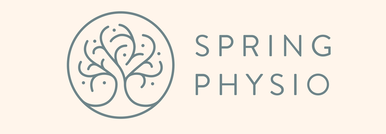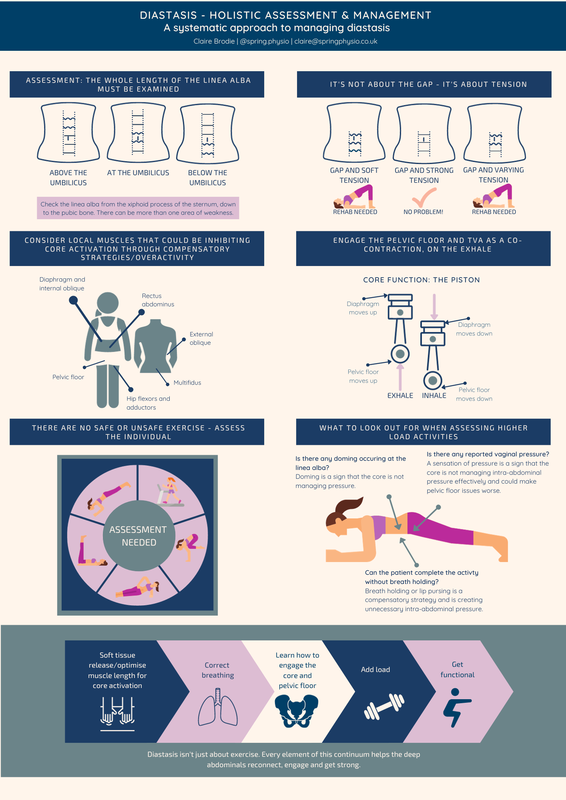|
There is little conclusive evidence on the best method of rehabilitating a diastasis. The aim of this infographic was to provide a bite size reference for best practice approach, based on the evidence that is available for managing the condition. It also aims to raise awareness ofthose less familiar with treating diastasis, to give them an overall view on management. The take home message is that there is no one size fits all method and that each patient will
need an individualised approach. The poster highlights the need to focus on tension of the linea alba, rather than gap size. This is supported by literature evidence that inter recti distance can actually increase with TVA contraction (Lee and Hodges, 2015 and Theodorsen et al, 2019). The basis of rehab is therefore focussed on tension rather than whether the gap physically decreases during the exercise. Assessing functional response to exercise on an individual basis can potentially give them more freedom to return to the things they love. The functional ability will vary person to person, even if the diastasis presents similarly to another in size or tension.The focus should be on whether clients can create tension across the linea alba during the task, rather than relying on gap size. When functional activities are not yet appropriate, rehabilitation can be goal specific and modifications set. Further research is needed to identify which rehab protocol of strengthening provides the best results, in order that we can confidently offer our patients the best possible treatment outcome that is evidence based.
0 Comments
Leave a Reply. |
AuthorClaire is a women's health and sports Physiotherapist. She is the owner of Spring Physio and is based in East Sussex. Archives
April 2024
Categories
All
|


 RSS Feed
RSS Feed